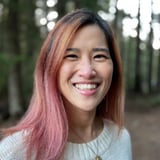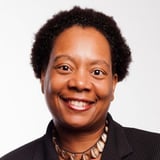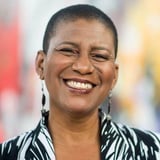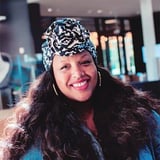Summary
DesignOps practitioners have helped advocate for inclusive design practices over the past several years. Still, key women-centric barriers persist such as safe access, time poverty, and female biological differences. To meet women’s needs, our design methodologies must ensure an inclusive lens from the start. In her talk, Mansi will share how DesignOps can engage their teams in embedding applicable insights, drawn from feminist practice, into their existing processes and toolkits. Attendees will leave with tools to: Learn from non-design disciplines Identify how our current methodologies overlook women Apply key design principles to create using a women-centric lens
Key Insights
-
•
Design methodologies claiming gender-neutrality often ignore women’s distinct needs, resulting in one-size-fits-men products.
-
•
Women-centric design can be classified into four modes: offensive, impartial, informed, and holistic, each reflecting different degrees of inclusivity.
-
•
Many products for women merely rebrand male-centric solutions (offensive), or ignore biological and social differences (impartial).
-
•
Holistic women’s design includes redefining product categories, like venture funding tailored to women’s unique entrepreneurial journeys.
-
•
Safety is a fundamental but overlooked design theme; women-centric communities prioritize safety first by creating women-only safe spaces.
-
•
The trust gap women face often stems from systemic failures rather than personal shortcomings like imposter syndrome.
-
•
Women’s lives are non-linear, with career gaps and time poverty due to gendered responsibilities, yet many services ignore this complexity.
-
•
Community and relationality play a crucial role in women’s learning and empowerment, and should be embedded as active habits in products.
-
•
Men and boys are part of both the problem and the solution in achieving gender equality; inclusive design should share this responsibility.
-
•
Emerging work on decolonizing design and innovative women-centric solutions often originates from the Global South, showing a path forward.
Notable Quotes
"Despite the focus on women, a man staffed the women’s project and completely forgot about their basic needs like breast pockets."
"Our so-called gender-neutral methods produce one-size-fits-men outcomes that fail to meet women’s real lives."
"Pink plastic gloves for tampon disposal were too big for an average woman’s hand, exemplifying offensive design."
"Snow clearing policies that prioritize roads over pavements ignore women’s caregiving responsibilities, leading to more injuries."
"A contraceptive brand called Manforce in a male-dominated society missed the chance to promote healthy sexual behaviors for all."
"Seeing the world through a women’s lens is a muscle even women designers have to build and remember to exercise."
"The trust gap for women comes not from lack of confidence but from systems that repeatedly fail and alienate them."
"Women experience more time poverty daily due to gendered responsibilities, a factor rarely acknowledged in design."
"Men and boys must share the burden of leading change if we want real progress in women-centric design."
"Much of the most innovative gender-inclusive design is happening in the Global South, decolonizing unquestioned norms."
Or choose a question:















More Videos

"A 101 conversation over coffee yields better insights than written reviews in 360 assessments."
Adam Cutler Karen Pascoe Ian Swinson Susan WorthmanDiscussion
June 8, 2016

"UXers are less satisfied than their peers because we have failed to set expectations about the real work of UX in organizations."
Peter MerholzThe Trials and Tribulations of Directors of UX (Videoconference)
July 13, 2023

"Human biases are the real problem behind algorithmic bias, not the algorithms themselves."
Lisa WelchmanCleaning Up Our Mess: Digital Governance for Designers
June 14, 2018

"Investing in sustainability today will yield dividends for future generations."
Vincent BrathwaiteOpener: Past, Present, and Future—Closing the Racial Divide in Design Teams
October 22, 2020

"Design your processes around learning, have blameless post mortems and celebrate failures especially."
Brenna FallonLearning Over Outcomes
October 24, 2019

"Never be afraid to get into good trouble; start by asking why."
Tricia WangSpatial Collapse: Designing for Emergent Culture
January 8, 2024

"Diverging and converging around the business model canvas helped us test and prototype delivery methods for the value propositions."
Edgar Anzaldua MorenoUsing Research to Determine Unique Value Proposition
March 11, 2021
"Leadership buy-in is really important—having an executive who understands the value of knowledge creation, distribution, application, and evaluation."
Designing Systems at Scale
November 7, 2018

"Ethics evolve faster than law; just because something is legal doesn’t mean it’s ethical."
Erin WeigelGet Your Whole Team Testing to Design for Impact
July 24, 2024
















